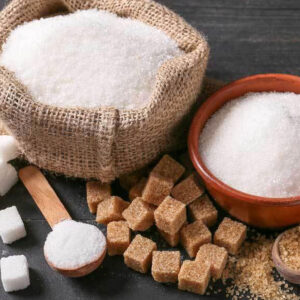Many people compare beet sugar vs cane sugar to understand their differences in flavor and texture.
Many people compare beet sugar vs cane sugar to understand their differences in flavor and texture.
Blog Article
Discover the Uses and Advantages of Beet Sugar Vs Cane Sugar in Your Daily Diet Plan
Discovering the distinct qualities of beet and cane sugar exposes greater than simply their sweetening capabilities; it highlights their distinct effect on health and wellness and cookeries. Beet sugar, recognized for its subtle flavor, is often preferred in delicate treats, whereas cane sugar, with its hint of molasses, includes splendor to durable dishes. Each type holds its very own nutritional account and glycemic effects, welcoming a much deeper understanding of their functions in a well balanced diet and lasting consumption techniques.
Origin and Manufacturing Procedures of Beet and Cane Sugar

The distinctive environments and soil types needed for expanding sugar beetroots and sugarcane add to differences in their cultivation practices and geographic distribution, affecting the business economics and sustainability of their production. beet sugar vs cane sugar.
Nutritional Comparison In Between Beet Sugar and Cane Sugar
Despite stemming from different plants, beet sugar and cane sugar are nutritionally really similar, both largely consisting of sucrose. Each offers concerning 4 calories per gram, translating to approximately 16 calories per tsp. Structurally, both sugars are made up of around 99.95% sucrose, with marginal quantities of various other materials like moisture and trace minerals, which do not dramatically change their nutritional profiles.

Inevitably, when picking in between beet sugar and cane sugar based upon nutritional web content alone, both offer the same advantages and drawbacks as they are basically forms of the very same particle-- sucrose, giving quick power without various other nutrients.
Influence On Wellness: Glycemic Index and Caloric Material
Discovering better right into the results of beet sugar and cane sugar on health, it is essential to consider their glycemic index and caloric material. The glycemic index (GI) of both beet and cane sugar is around 65, categorizing them as high-GI foods, which can cause quick spikes in blood sugar degrees.
Each type of sugar includes about 4 calories per gram, making their calorie web content equivalent. For those keeping an eye on caloric intake, specifically when taking care of weight or metabolic health and wellness conditions, understanding this equivalence is essential (beet sugar vs cane sugar). Extreme consumption of any high-calorie, high-GI food can a knockout post contribute to health issues such as excessive weight, heart illness, and insulin resistance.
Environmental and Economic Considerations of Sugar Manufacturing
Beyond health and wellness influences, the production of beet and cane sugar also increases significant ecological and economic worries. Sugar beet cultivation has a tendency to call for cooler climates and has a lower geographical impact compared to sugar cane, which flourishes in exotic areas. Nonetheless, both crops are intensive in regards to water use and land profession, possibly causing deforestation and water shortage. Financially, the global sugar market is extremely unpredictable, influenced by modifications in global trade policies and aids. Several countries incentivize sugar manufacturing via financial support, skewing market value and influencing small farmers adversely.
Additionally, using pesticides and fertilizers in both beet and cane sugar growing can bring about dirt degradation and pollution, additional affecting biodiversity and local water bodies (beet sugar vs cane sugar). The selection in between growing sugar beet or cane often depends upon local environmental conditions and financial factors, making the helpful site sustainability of sugar production a complex issue
Culinary Applications and Flavor Distinctions
While the environmental and financial elements of sugar production are indeed significant, the selection between beet and cane sugar additionally affects culinary applications and taste profiles. Beet sugar, obtained from the sugar beet plant, is recognized for its incredibly neutral preference.
Walking stick sugar, drawn out from sugarcane, commonly keeps molasses traces, which impart a distinct richness and depth. This small molasses taste improves the intricacy of baked products, sauces, and marinades. It is especially favored in products where a caramel touch is desired, such as in brownies or gingerbread. The slight variation in dampness material in between beet and cane sugar can affect read what he said the structure and uniformity of dishes, making cane sugar a recommended choice for details recipes that benefit from its one-of-a-kind buildings.

Final Thought
Finally, both beet and cane sugar have distinct beginnings and production procedures, supplying comparable dietary profiles with small distinctions in sodium content and flavor. While their effect on health, especially pertaining to glycemic index and calories, is equivalent, the selection in between them typically comes down to ecological, financial aspects, and details cooking needs. Recognizing these aspects can assist customers in making educated choices that line up with their health and wellness objectives and taste preferences.
Report this page